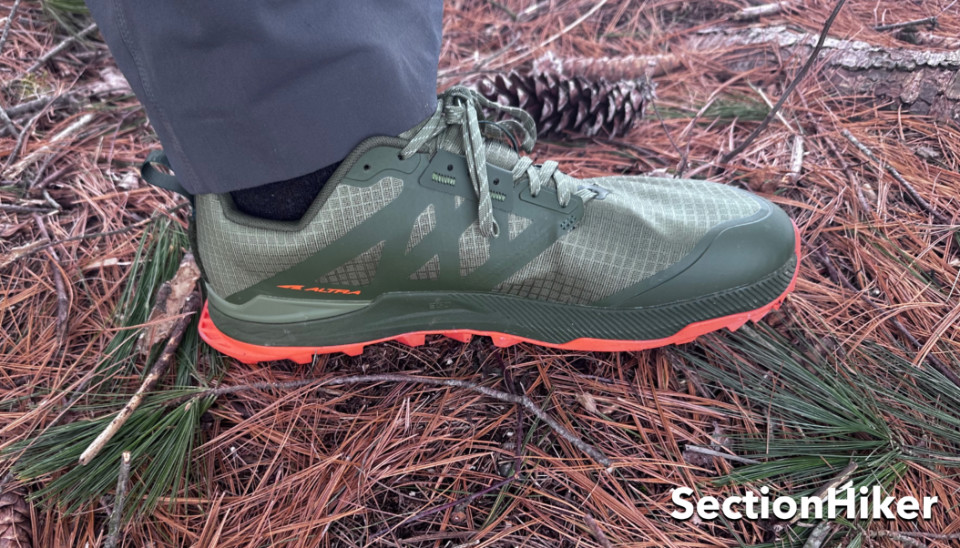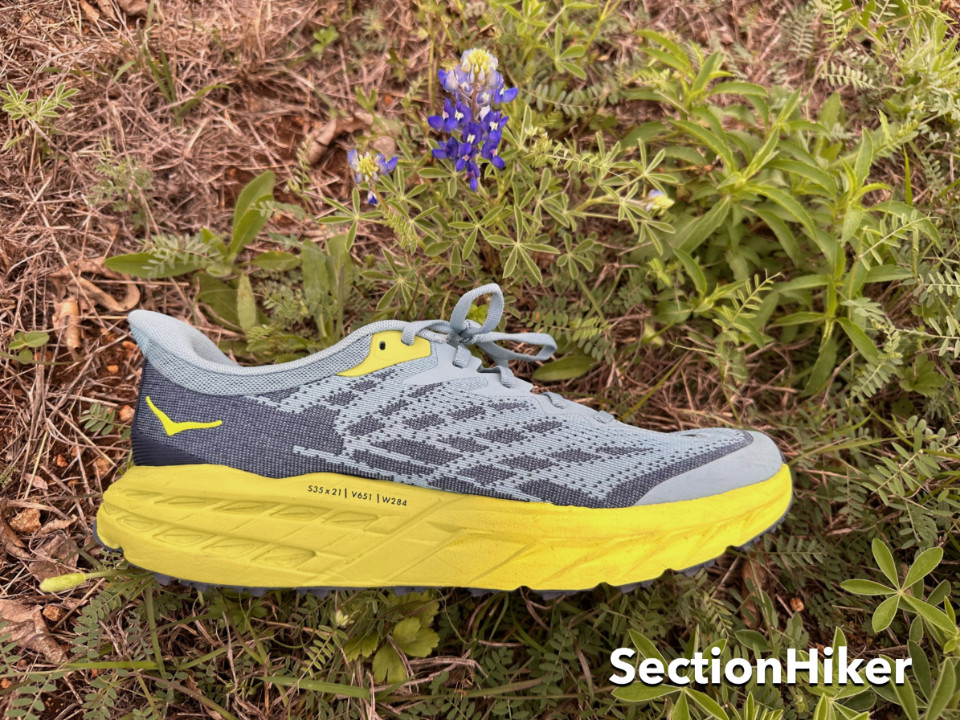Trail runners are becoming increasingly popular in the hiking community because they’re lightweight, their soles provide good traction, and they’re less likely to cause blisters because their uppers are much softer than the rigid leather of old-school hiking boots.
Trail runners differ from road running shoes because they’re designed for the uneven terrain, packed earth, gravel, rocks, and roots found on hiking trails instead of asphalt or concrete. They usually have more aggressive lugs in the sole for traction and are made with softer rubber for better grip on rock surfaces. The uppers are often made of mesh to accelerate drying with extra “bumpers” in front the front or along the sides of the toe box. Many also have wide toe boxes, so your toes can splay out (like claws) for better grip and leverage on uneven terrain. Wide toe boxes can help relieve or prevent toe conditions over the long term, like metatarsal pain or Morton’s neuroma, which produces a tingling feeling in the toes.

Trail runners also differ in terms of “drop” and “stack height.” Drop measures the difference in the height of the heel from the height of the toes.
- Zero-drop trail runners recruit more of your calf muscles when hiking, but it can take a while to get used to because they stretch the Achilles tendon more than shoes with a larger drop. Most trail runners have drops of 0 up to 14 mm. Higher-drop trail runners wear more like regular shoes and usually require little adjustment time.
- Stack height, also measured in mm, refers to the sole height above the ground and is a good indicator of a shoe’s cushioning. Shoes with a low stack height are usually somewhat more stable because they’re closer to the ground than shoes with high stack heights with lots of cushioning.

Most trail runners have foam insoles that provide very little arch support and only come with thin foam inserts.
- If you already use insoles, you should use them when you try on new trail runners. However, you may find that they’re too thick and take up too much volume inside the trail runner, leaving less space above the top of your foot. If that’s the case, try using thin insoles designed for trail runners/road running shoes like SuperFeet Run Support Low (formerly named SuperFeet Carbon).
- If you’ve never used after-market insoles, they can help avert plantar fasciitis by locking your heel in place, preventing protation, and by providing more support for your arch. I swear by them myself.

When fitting trail runners, you want a snugger fit near the heel and midfoot to prevent movement and a looser one in the toe box so your toes can spread out on ascents and descents for better traction and control. Be sure to leave adequate space—a finger width usually does it—in front of your toes so that your toenails don’t get jammed up front or even broken when descending hills. Don’t be afraid to size up a half-size if required.
Be sure to try new trail runners with the socks you plan to wear for hiking since these can greatly impact fit. On the flip side, you can also try new socks to shim out a shoe and get the fit you want.
Trial and Error
The best way to find a trail runner that fits you is to try many pairs of trail runners to see which feels better. There is a surprising amount of variety between makes and models. You may have to try up to a half-dozen different makes and models.
Before you choose which is best, I recommend trying them outdoors to ensure they work for you on a hike. Several retailers and shoe manufacturers offer the option to return used shoes, even if they’ve been used outdoors. This is an offer worth its weight in gold.
After all that, pay attention to how a trail runner makes your knees feel. Even minor changes in shoe drop or arch support can affect knee comfort or cause pain. Keep tweaking the components of your footwear system until you find a combination that works. Remember, a well-fitting trail running shoe should feel comfortable and secure, with enough space for your toes to move freely.
SectionHiker is reader-supported. We only make money if you purchase a product through our affiliate links. Help us continue to test and write unsponsored and independent gear reviews, beginner FAQs, and free hiking guides.
